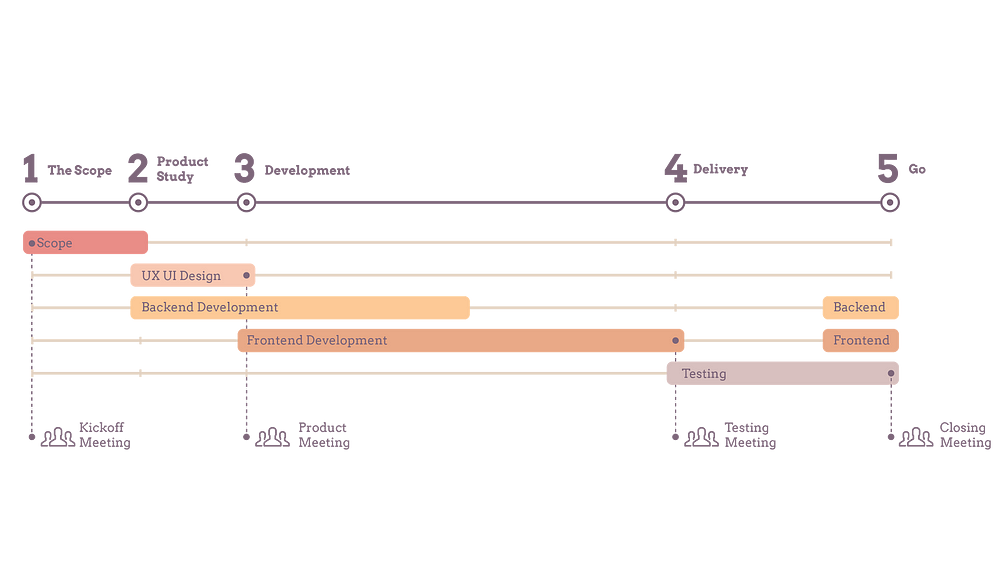Launching faster, in weeks rather than in months, can be crucial to prove or disprove a startup’s Value Proposition early, keep the team motivated and maintain the costs low.
The Lean Startup theory holds that:
the minimum viable product is that version of a new product which allows a team to collect the maximum amount of validated learning about customers with the least effort.
In other words, launching a startup should be about creating a Minimum Viable Product (MVP) aimed at achieving maximum Customer Validation while employing the minimum effort in terms of time and money.
However, when launching a startup we frequently find that projects struggle to find a simple (and single) unique value proposition (UVP) that is easy to validate. This results in complex value propositions and scope creep (too many features) and effort maximization (too much time and investment).
This is why projects first of all should find a UVP that is extremely simple to understand and very valuable to the target audience. This helps to scope features in a way that they are meaningful, proportional and achievable in a short period of time.

Finding a simple UVP and a small scope results in a faster MVP launch and a smaller wait to achieve early validation results in more time to adapt to customer feedback.
And above all saves entrepreneurs a lot of money VS simply asking an agency to execute on ideas that are not well defined/not yet a super simple, easy to understand value proposition.
The state of Custom App Development = Focused on execution, not on product
In the US, to build an App now you need to hire a team at an hourly rate of 150 USD according to this Techcrunch article that is a handsome 100,000 to 150,000 USD assuming 4 people and 4–6 months.
To illustrate further, in a 2013 article of The Next Web a simple MVP of Instagram would have costed 100–300.000 USD and would have taken 3–6 months.
Fast forward to 2017. The folks over at Gigster say that a mid complexity Web + Android + iOS project will set you back around 130.000 USD and take about 4–6 months.
An Indian to Eastern European high standards agency will set you back roughly a third of US rates (40–60USD/ hour) according to this Techcrunch article . Hence 35.000 to 60.000 USD for your iOS, Android or Web App. If you want all three together you will have to multiply time and cost.
Hence developing a mid complexity App can cost anywhere between 35.000 to 150.000 USD and take up to 6 months which for a lot of entrepreneurs means too much money, too long a wait and discouragement to keep on.
This is why we came up with an idea to increase chances of success by getting involved early in not just in the execution (pure development), but also in the Product definition process that makes sure you will validate your business quickly with the right audience via a meaningful product (MVP).
The way ahead: 10kStartup.com’s Startup Building Process
As second time founders we know entrepreneur’s quest for speed and early KPIs. That’s why we’ve created a method that we use with our clients at 10kStartup.com which breaks down large scopes into simple, logical and achievable stages that result in a valuable MVP sooner rather than later.

Stage 1: The Scope
This is a conversation to dive deep in the customer problem. This results in a solution to extract the user top priorities (aka user stories) that will fit in the MVP. Then a spec sheet and a Stakeholders Analysis/User Stories are created for the project.
Only the features that are absolutely fundamental to prove that it solves the customer problem should be inside the initial socpe.
Stage 2: Product Study
Execution of the main screens and their UX flows to deliver UX wireframes and UI mockups. Here is an analysis of one of our Product Studies: The Venga Product Study.
Stage 3: Development
Execution of the Software Architecture foundations/ API structure and execution of the HTML/CSS Styling, Frontend and Backend Development.
Stage 4: Delivery
Final testing (development testing was done previously with Test Driven Development) with deployment of Funnel Tracking/Metrics.
Stage 5: Launch & Feedback Loops
The App’s launch. And after the launch, every time required, an Agile approach to rapid iteration based on customer feedback achieved via multidimensional tracking/metrics.
Technology wise we use development best practices and the most advanced frameworks both for backend and frontend to launch top notch products. We use Node.js and Angular 2 + Redux for web Apps and Native Script for mobile.
Productize, Develop, Validate early
We believe the future of App development won’t be just about executing/developing ideas.
We believe the future of App development will be much more Product centric.
Early focus on Product helps ensure that an App is built in a way that it is meaningful to its audience, will be in a position to achieve great metrics and that only what is necessary gets built in the MVP.
This approach means a smaller scope, a shorter development time and a lower budget.
That’s why your Startup’s MVP can be launched in a few weeks, not several months.
























